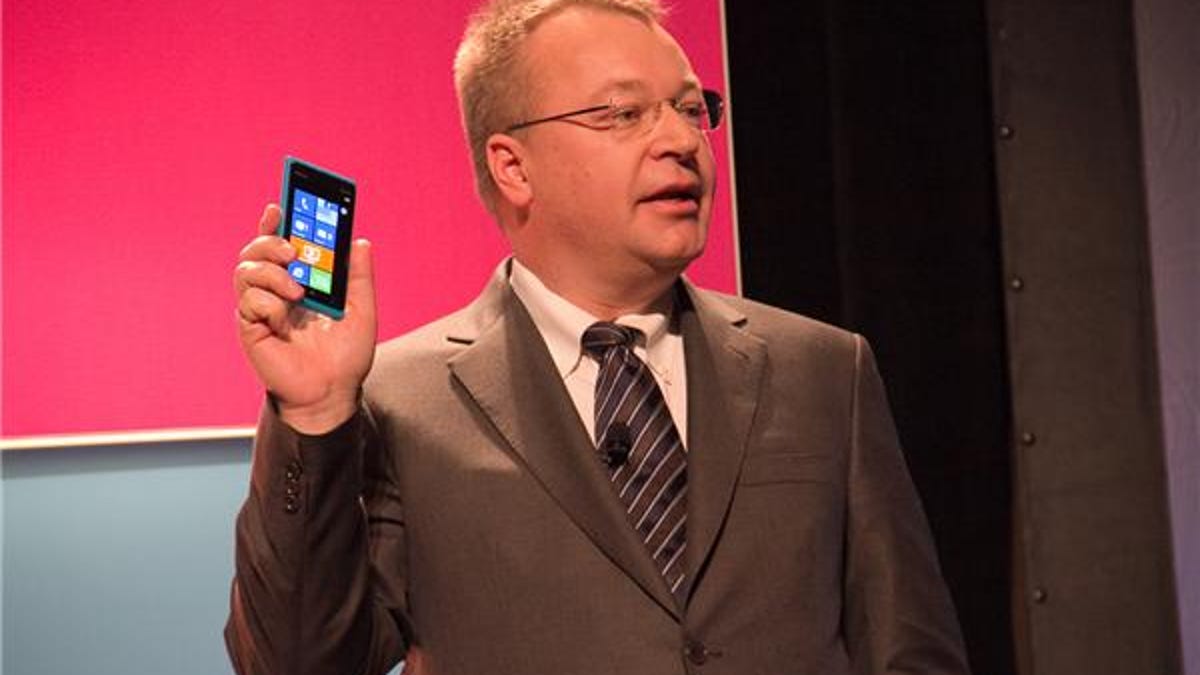CES 2012 a 4G orgy, but Android ICS is still MIA
More than 21 smartphones poured out of CES 2012, the vast majority of them supporting 4G LTE. Windows Phone and AT&T were success stories, while T-Mobile's tough road ahead, Motorola's new strategy, and Ice Cream Sandwich's slower-than-expected rollout will define the start of the year's offerings.

LAS VEGAS--Every January, CES sets the tone for the year with a bonanza of new, thrilling smartphones touting the best and brightest technology. This year proved no different, with more than 21 new smartphones to behold.
More than a few were instant hits, like the Motorola Droid 4, a 4G LTE handset with Verizon, which has a sleek body and a keyboard that's reminiscent of a MacBook in miniature. There's also the Sony Xperia S, which won our admiration for its slick, cutting-edge design and its reality display; and the HTC Titan II, an LTE Windows Phone sequel for AT&T that wowed us so far with a 16-megapixel camera (16!) that actually appears capable of delivering high-quality shots.
Most impressive of all, and winner of our Best of CES award in the smartphone category is the Nokia Lumia 900. The Finnish phone maker has poured design resources into this device, which is larger than the 3.7-inch original and has 4G LTE support, again on AT&T's network. The effort shows in details from the bubbled 4.5-inch Super AMOLED screen to the phone's unique shape. More than that, the handset is poised to pin Nokia back on the U.S. map, while giving Windows Phone OS a needed push.
Amid the flurry of specs, booths, bright lights, and dizzying demos emerged some definite themes that pervaded this year's CES.
4G LTE goes mainstream
Smartphones headline the show, but there's no doubt that the award for supporting actor goes to 4G LTE. AT&T's marathon press conference focused much on the carrier's planned expansion of its LTE infrastructure and the cloud services it makes possible, and it highlighted seven new 4G LTE devices. "Verizon had better watch out," AT&T seemed to say, "We're coming."
Sprint, in the meantime, confirmed its LTE commitment with three new products, including its version of the Samsung Galaxy Nexus. This new version has one thing Verizon's Galaxy Nexus doesn't have: Google Wallet.
Of course, reigning LTE leader Verizon hardly rested on its laurels. Big Red announced the aforementioned Motorola Droid 4, Droid Razr Maxx, and LG Spectrum--all LTE.
In fact, Verizon representatives told CNET in an interview (twice) that 4G will become a staple for "all" phones going forward, with very few exceptions.
Even MetroPCS, the No. 5 U.S. network with its considerably smaller customer base than the Big Four, released two new LTE Android phones.
The question is, will consumers make the distinction between the LTE technology and 4G in general? That remains to be seen. Premium carriers typically charge more for faster data access and hot-spot features, and even different LTE networks vary in speed and coverage performance.
T-Mobile, which barely had a presence at CES, hinted at its LTE plans at a private event. There, it played up the affordability of its data plans and announced to gathered press the Samsung Galaxy S Blaze 4G. T-Mobile promises the Blaze 4G will cost less, but offer competitive performance compared to other high-end luxury handsets.
Where, oh where, was Ice Cream Sandwich?
We predicted two dominating trends for CES this year: LTE, which we saw, and a slew of Android 4.0 Ice Cream Sandwich (ICS) phones, which we did not. We blame Verizon's Samsung Galaxy Nexus for messing with our tea leaves and Magic Eight Balls. Yet ICS' only appearances were in Sprint's version of the phone, and in an unlocked pair of Huawei phones.
While carriers and phone makers promise that the new phones will be upgradeable, it was still overwhelmingly a Gingerbread world. There's always the remote possibility that the crop of phones announced at CES could ship in the coming months with ICS, but don't hold your breath. That said, we're just as impatient as you are.
Windows Phone on the rise
We liked what we saw in the ever-evolving Windows Phone OS and its supporting ecosystem of apps and cloud services. That said, Microsoft and Nokia, a shop now virtually dedicated to Windows Phone, both have work to do.
The road ahead
AT&T, Microsoft, and Nokia were the show's biggest winners, with the Verizon/Motorola pair close behind. Ice Cream Sandwich is coming, but slower than we anticipated, and thanks to Nokia spurring the market, Windows Phone could see a much-needed surge to challenge some of Android's dominance. In the meantime, Motorola said that it's pacing its release cycle with fewer, better phones, and LTE is absolutely everywhere...except T-Mobile, which acknowledged that after the failed merger with AT&T, it's taking a hard look at its HSPA+ network.
This year may have just begun, but as 2012 marches on, it's clear what we'll see: the mainstream adoption of LTE as America's 4G standard; smartphones with bigger, better cameras; Windows Phone's aggressive bid for market share; and, of course, the transition to Android Ice Cream Sandwich. Prepare yourself, folks. It's going to be quite the ride.





